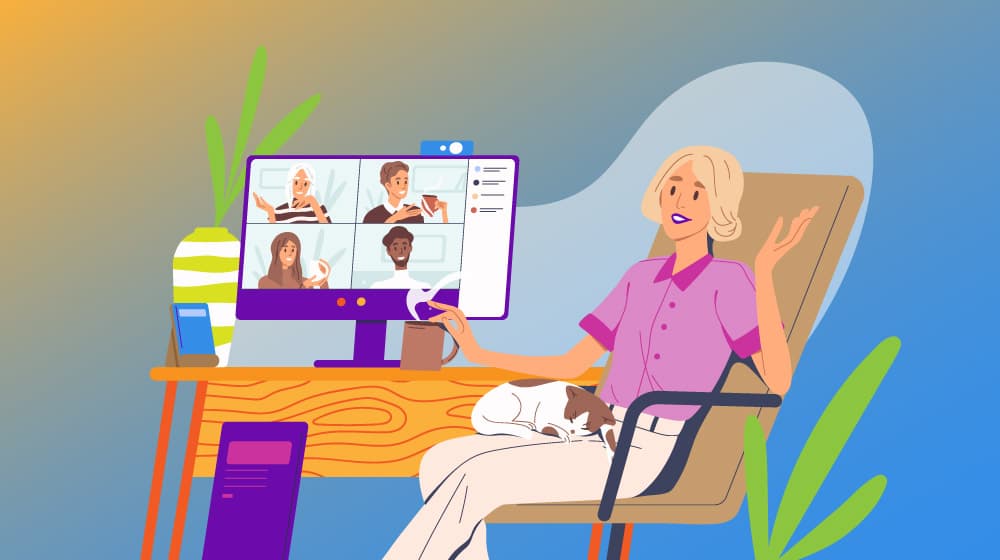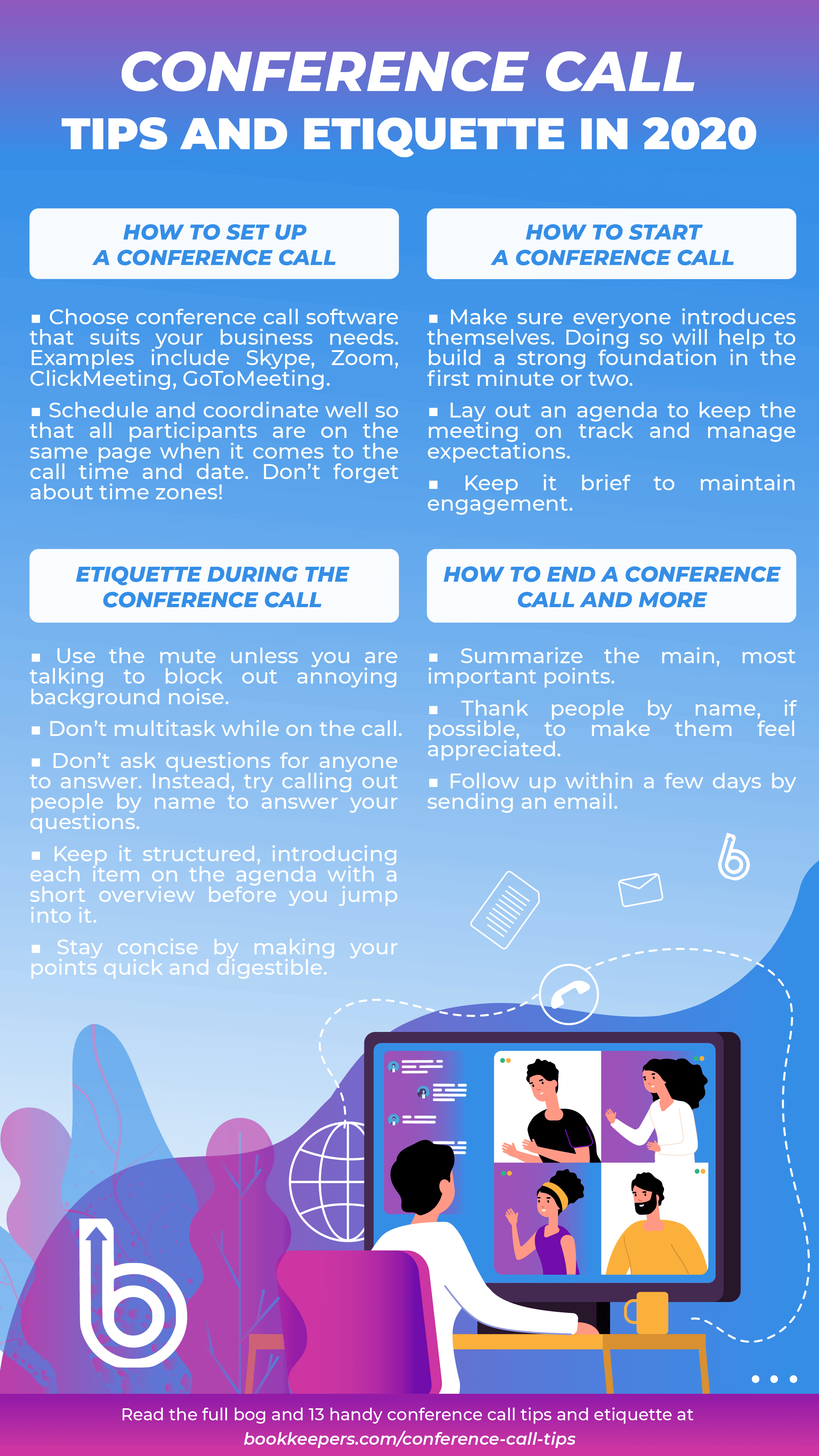Conference Call Tips and Etiquette in 2020

The COVID epidemic of 2020 has made conference calling an essential part of any office worker’s routine. And mastering conference call tips are so important to maintaining a good professional reputation. For that reason, I’ve compiled a handy reference of my 13 favorite conference call tips and etiquette.
How to Set Up a Conference Call
Popular Conference Call Software
The first step to making a conference call run smoothly is picking a software all participants are comfortable with. Some good choices are:
- Skype — It’s straightforward and simple. Doesn’t have the bells and whistles of more modern software, but is accessible even for technophobes and gets the job done.
- Zoom — Zoom is the conferencing tool of choice during the 2020 COVID pandemic. It is easy to get onto and use, even for newbies. It has a decent amount of cool features, and call quality is excellent.
- ClickMeeting — Not the simplest software out there, but what makes it shine is the in-depth analytics it provides about participants after the meeting.
- GoToMeeting — A relatively simple mobile-friendly option.
Picking the perfect conference call software can be a make or break decision for your call, so you may want to do even more research into popular conference call software.
Scheduling and Coordination
Make sure all participants are on the same page when it comes to the call time and date, especially the essential participants who will have speaking roles. Don’t forget about time zones! Send out calendar invites on the schedule your company uses to make even more sure everyone is apprised.
Pro Tip: You can Google something like “10 am EST in Singapore” (for example) to find out what time you should give someone in another time zone.
How to Start a Conference Call
The start of conference call tips is the most critical part of this list. If you do not build a strong foundation in the first minute or two, the call is sure to be a dud.
Make Sure Everyone Introduces Themselves
Everyone in the call must get an introduction before you start. It should be brief, just name, and role in the call. Even if the participants already know each other, remember that some of them are probably extremely busy with other clients and don’t usually remember all of their colleagues.
Make sure everybody introduces themselves. This will give everyone else a chance to hear their voice, which will help avoid confusion later in the call.
Lay Out An Agenda
After introductions, layout a step-by-step plan of what you’ll cover in the meeting. Doing so will keep the meeting on track and help people know if their questions will be answered. The structure you lay out here is central to a few of the conference call tips below, so you should plan it before the call begins.
Keep It Brief
The intro is the part of the call most likely to kill the participants’ interest if done wrong. Make sure to keep it snappy and brief so as not to lose anyone.
Etiquette During the Conference Call

Use the Mute
From moment one, your line should be muted unless you are talking. The background noise of a bustling office or a car driving by in the street outside, or even the dead air in a silent room, can be very obnoxious. This is especially true on a call where you can’t tell whose line the white noise is coming from.
Don’t Multitask
Don’t do other things, like eat or exercise, while on the call — at least, not unless you’re going to be muted the entire time. People will be able to tell, and it sends the message that your personal life is more important than your job.
Don’t Ask Questions for Anyone to Answer
Asking questions like “Does anyone have any concerns about…” or “what do we know about…” is a bad idea. It will probably lead to one of two things. Either a lot of people talking over each other or one person that gets to speak and a lot of others who do not get to have their voices heard. Instead, try calling out people by name to answer your questions.
Keep it Structured
Stick to the structure you laid out at the beginning of the call, introducing each item on the agenda with a short overview before you jump into it. For example, “next, let’s discuss the issues with…”
Stay Concise
Clarity is obviously your #1 priority on a conference call, but making your points quick and digestible is also very important. Purely audio-based conversations have a harder time keeping the participants’ attention than face-to-face ones, so you should try to move fast and avoid wasting time.
How to End a Conference Call and More
Ever heard of “recency bias?” It is a principle that basically says people are more likely to remember the last part of a list than any other part. And for the same reason, conference call participants are more likely to remember information near the end of the call than any other part.
Summarize the Main Points
Because of “recency bias,” you should recap the most important points made in the call as close to the end as possible.
Thank People by Name
Make everyone on the call feel appreciated by thanking them individually. This will be impossible if it’s a huge call, but in that case, you should thank the call’s major players and make an attempt to address the different groups who joined the call.
Follow Up
Within a few days of the conference call, send out an email to each participant (a personalized message for each participant is best for smaller calls). Remind them again what the significant conclusions found on the call were, and thank them for being there. Also, ask if they have any follow-up questions or comments.
Following up has a ton of other advantages, both practical and psychological.
In 2020, mastering these conference call tips is a very marketable skill for any employee and certainly any entrepreneur.

DO YOU HAVE ANY ADDITIONAL CONFERENCE CALLING TIPS NOT MENTIONED HERE? LET ME KNOW ON THE BOOKKEEPERS FACEBOOK!




